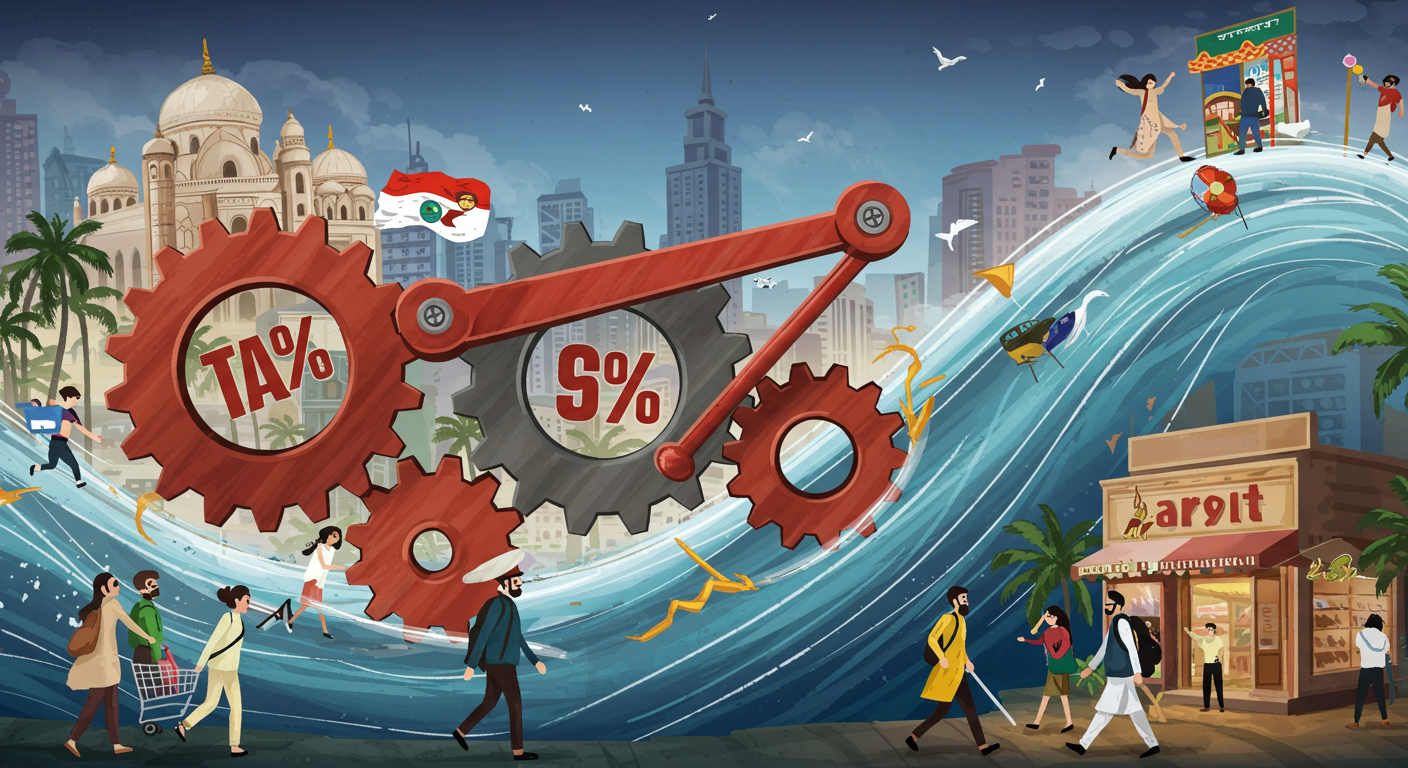
The recent news from State Bank of India (SBI) about an anticipated surge in consumption and credit growth, driven by tax and interest rate cuts, truly resonates with me. As reported by Subhana Shaikh and Shayan Ghosh (shayan.g@livemint.com) in Livemint, SBI, India's largest lender, now expects FY26 credit growth to hit 12-14%, a notable increase from earlier projections Tax cuts, rate cuts, and a consumption boom: SBI dials up credit growth outlook.
C.S. Setty, the Chairman of SBI, specifically highlighted the central bank's measures to smooth credit flow and the fiscal steps taken through GST 2.0 as key enablers for this sustained consumption demand, particularly within the Retail, Agriculture, and MSME (RAM) segments. This optimism is also fueled by Union Finance Minister Nirmala Sitharaman (nirmala@svpnpa.gov.in)’s earlier statements anticipating a surge in consumption after the sweeping rationalization of the indirect tax regime in September. She believed that increased purchases would likely offset the impact of lower tax rates on revenue receipts.
Reflecting on this, I feel a significant sense of validation. The core idea I have consistently conveyed is the profound impact of tax adjustments on consumption and the broader economy. Years ago, I emphasized the need for lower tax rates to stimulate the economy and encourage private sector investment. In my blog, "India Inc pitches for lower tax rates in Budget" India Inc pitches for lower tax rates in Budget, I discussed how tax rate lowering, by itself, might not lead to substantial increases in private sector investment and job creation unless accompanied by bolder initiatives.
Indeed, I had even put forward the radical suggestion of a "TOTAL ABOLITION OF PERSONAL INCOME TAX" to drive India towards a sustained 10% GDP growth, an idea I explored in "Budget Time is 'Taxing' Time" Budget Time is 'Taxing' Time. The principle was simple: put more money directly into the hands of citizens to fuel consumption and savings, which would in turn stimulate economic activity and investment. My earlier piece, "Consumption Power" Consumption Power, highlighted the growing, albeit slow, consumption power of Indians, underscoring the potential if unlocked effectively.
The discussions around GST, mentioned by C.S. Setty, also bring to mind my proposals in "GST Conundrum: Compromise Formula" GST Conundrum: Compromise Formula, where I suggested innovative mechanisms like transferring a percentage of GST directly to consumers' PPF accounts. This was designed not just to encourage formal transactions but also to boost domestic savings and provide a form of social security, creating a virtuous cycle of spending and saving.
While the current measures by the RBI and the government are certainly steps in the right direction, strengthening consumption and credit flow, they echo the fundamental principles I've advocated for years: that direct empowerment of consumers and businesses through thoughtful fiscal policies is crucial for genuine economic dynamism. Seeing how things have unfolded, it's striking how relevant those earlier insights still are, urging us to revisit innovative ideas that go beyond incremental changes to achieve truly transformative growth.
Regards,
Hemen Parekh
Of course, if you wish, you can debate this topic with my Virtual Avatar at : hemenparekh.ai






No comments:
Post a Comment